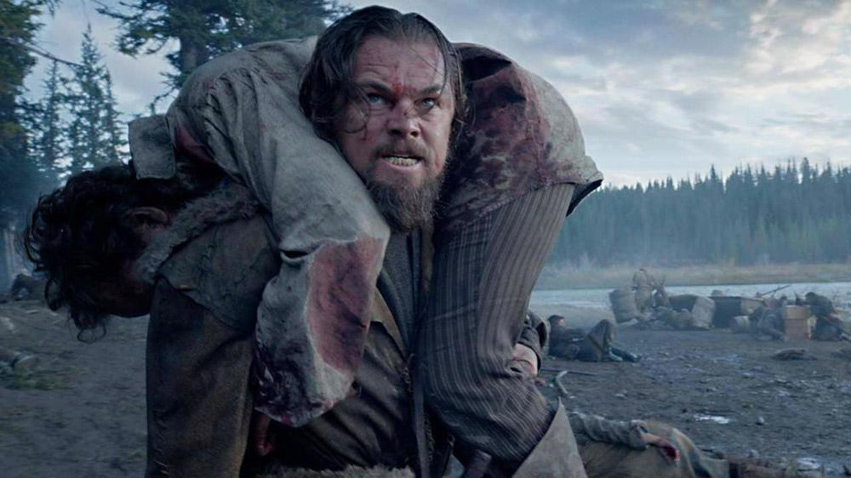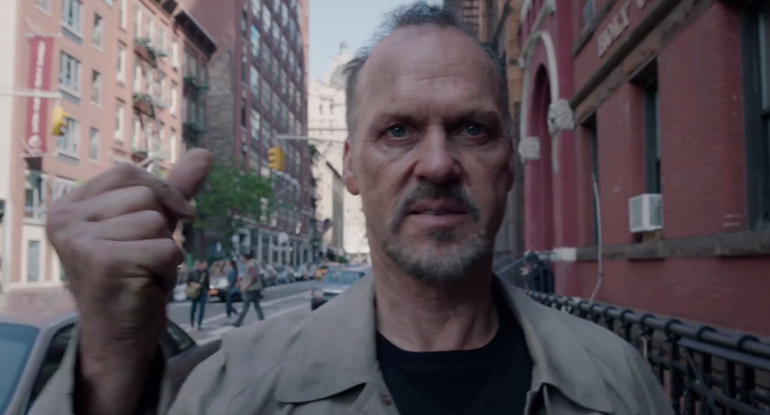
Not just a compelling movie, The Revenant is an experience for the audience and a marvel of filmmaking. Oscar-winner Alejandro Gonzalez Iñárritu (21 Grams, Babel, Biutiful, Birdman) may be the director doing the most groundbreaking work in today’s cinema, and The Revenant, with its long shoot in hostile conditions, is his triumph over the seemingly impossible.
The Revenant is based on the historical episode of mountain man Hugh Glass, who was fur trapping in the Missouri River watershed of the Dakotas in 1823, when the area was completely unspoiled and inhabited only by nomadic bands of Native Americans. Glass was severely injured in a bear attack, left for dead by his companions and crawled 200 miles to safety. A “revenant” is a re-animated corpse, and Glass essentially returned from the dead.
Leonardo DiCaprio plays Glass, and his performance is extraordinary. For one thing – the most obvious – DiCaprio is a human piñata who actually must stand and then submerge in a freezing river, get bounced around by a CGI bear, chew on raw bison liver, crawl across uneven ground, and on and on; he takes a licking and keeps on ticking. And, in at least two-thirds of the movie, Glass either isn’t able to speak or has no one to talk to. So DiCaprio must convey his terror, grief, determination to survive and seek revenge with his physicality.
There are also solid performances by Tom Hardy (being villainous) Will Poulter and Domhnall Gleeson (a good year for him – also Ex Machina, Brooklyn and Star Wars).
There probably isn’t a more overused word in the current culture than “awesome”. But it’s precisely the right word to describe the depiction of Glass’ ordeal. The dazzling scenery as photographed Iñárritu‘s equally brilliant cinematographer Emmanuel “Chivo” Lubezki is awesome, as is the overall filmmaking challenge. In particular, the bear attack and an extended one-shot of a Native American attack with the camera moving by and forth among the combatants are brilliant and unforgettable. Showing off, Iñárritu even throws in an actual avalanche as a background shot.
The result is an utterly authentic film. Now I think I know what it looks like when a bear attacks and when an Indian band raids. DiCaprio shows us convincingly how it looks when a man grieves.
The Revenant is also exhausting – in a good way. As the film opens, we see men creeping through a primordial forest that has been flooded by a river. They are tense and so are we. We can’t tell whether they are hunting or hunted or both. We soon come to understand that their heightened alertness and intense concentration is required to survive a dangerous environment. That level of intensity remains throughout the film, and it wears down the characters and the audience.
History buffs will appreciate that Glass was part of Ashley’s Hundred, an enterprise that included many mountain men (Jim Bridger, Jedediah Smith, Kit Carson) who would later become guides and explorers with central roses in the history of the American West.
I also recommend Sheila O’Malley’s insightful comments on survival movies, in particular the very compelling Touching the Void.
This is one of the very best survival movies. See The Revenant, and make sure that you see on the Big Screen.

